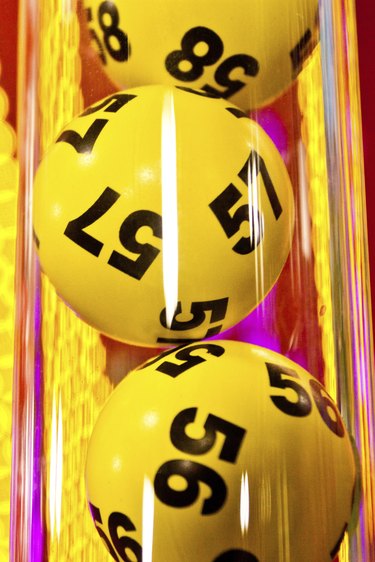
Winning the lottery has more to do with luck than number crunching, but Microsoft Excel has a few valuable tools to help you keep track of past numbers, identify frequently-picked numbers, generate random numbers and evaluate the cost-effectiveness of playing a specific jackpot. Most of the tools you'll need can be found in the Analysis Toolpack, which you can download from Microsoft for free (link in Resources). While Excel won't generate winning numbers, it can help you be a better-informed lottery player.
Keeping Track
Video of the Day
Above all, Excel is useful for keeping track of your ticket purchases and the winning number for each draw. Make each column header the date of the draw and create numbered rows for as many tickets as you usually buy. Enter all of your numbers as soon as you buy the tickets or pre-fill the rows if you always play the same numbers. Under your ticket numbers, create a bold row for "Winning Numbers" and write in the number as soon as it is announced. You can even use conditional formatting to highlight your ticket number in the case of a match with the winning number. The =COUNTIF function will highlight a winning number in the range of your ticket purchases if it coincides with the number in the last row.
Video of the Day
Lucky Numbers
The Analysis Toolpack includes a Histogram to identify numbers that appear frequently in a set. In a lottery spreadsheet, you can use a histogram to find lucky numbers that are picked more often than others. Create one column of all the winning numbers from past draws. If you don't have the information yourself, you can find it on most lottery websites. Copy the column into a second column, organize it into ascending order and delete duplicate values. This second column establishes the number intervals (Bin Range) you wish to measure. Click on "Data" and then "Data Analysis," select "Histogram" from the list and click "Ok." Follow the menu instructions to identify your input range (the winning number) cells and bin range cells and customize other options as desired. Excel will produce a bar chart where the tallest bars identify the luckiest picks.
Random Numbers
For the skeptical statistician, the fact that certain numbers appear more often in the lottery doesn't affect the probability that they will appear again. Because lottery balls have no memory, every number is just as likely to appear from draw to draw. Lottery players, however, do have a memory and should use Excel to guarantee a truly random number selection. Create one column with the draw date as a heading. In the cell underneath, type in "=RANDBETWEEN(1000,9999)" for a four-digit lottery. Adjust the number of zeros and nines accordingly depending on how many digits the lottery uses. Repeat the formula in the cells below if you plan on buying more than one ticket and even generate random numbers for future lotteries by creating new columns.
Is It Worth It?
Excel can help you determine which lottery games are worth your hard-earned cash. Create column headings for "Odds" and "Jackpot" at the top. Leave one space for row titles and list the lottery games in your area in each row. The COMBIN function calculates odds by determining the number of possible combinations in each game. If a lottery game, for example, asks you to select six numbers from a pool of 49, type in =COMBIN(49,6) to determine that there are just under 14 million possible combinations. Leave this value under the Odds column in the appropriate row and then look up the week's jackpot to write into the next cell. Any time the odds are greater than the jackpot, you should probably hold on to your money.